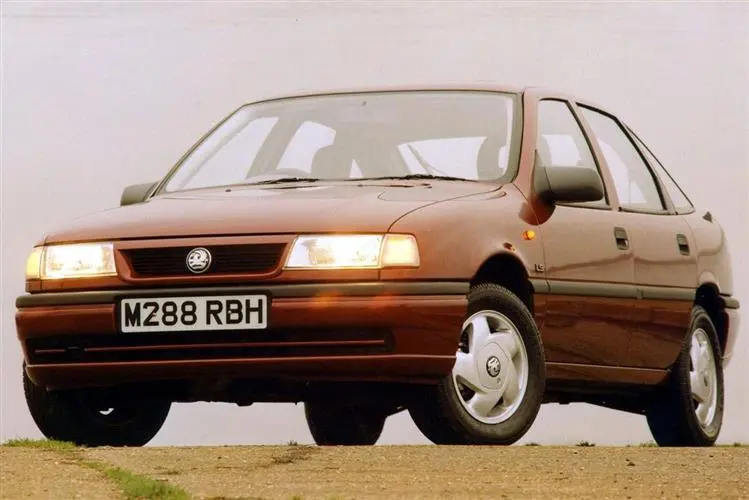Images

1 / 4
Arguably the most successful fleet car of all time, Vauxhall's Mark II Cavalier is hard to ignore on the secondhand market, if only because of the number of examples still on the forecourts.
To be fair, it does make a great deal of sense as a used buy. Build quality was always good, the car always performed well and servicing and parts remain easy and cheap.
+ More
History
The Mark II Cavalier was introduced in October 1988, an all-new shape which nevertheless carried over many parts from its successful predecessor. Vauxhall never stopped improving it, however, right up until its replacement by the Vectra at the end of 1995.
Only four-door saloon or five-door hatchback bodystyles were ever offered and the initial engine line-up included 1.4, 1.6 and 2.0-litre petrol engines as well as a 1.7-litre diesel. Soon after launch, 1.8-litre and 4WD models were announced with a turbo diesel added in March 1992.
Not long afterwards, the range was face-lifted with a new grille and changes to the rear lamps that were only really obvious on the pricier models. More importantly, catalysts and side-impact protection beams were now fitted as standard. Next, Vauxhall also decided to fit anti-lock brakes and driver's airbags to every model.
In 1993, a 2.5-litre V6 made its debut, the smoother alternative to the newly introduced (but largely unloved) 4WD turbocharged flagship. Finally, in 1994, the super-economical 1.6-litre E-Drive units and 16-valve 2.0-litre powerplants were announced. The range was replaced in 1995 by the new Vectra.
+ More
What you get
A lot of car for the money. Don't be worried about those that started life on fleets; many will have been well looked after and have completed non-demanding motorway miles.
+ More
What to look for
Buying at a reputable main dealer will make sure that the car you're looking at hasn't been tampered with - `clocked` in other words. More than half of all Cavaliers were sold as company cars and many will have covered over around 25,000 miles a year. That means you should have a healthy suspicion of low mileage examples. Getting it wrong could mean big repair bills way before you expect them.
If you can find a turbo or a V6 model, you'll find they're good value (though for turbos in particular, a full service history is essential). The non-turbocharged 1.7-litre Opel engined diesels (usually bought - and thrashed - by fleets) are slow and generally unpleasant, in marked contrast to their excellent Isuzu turbo-powered diesel counterparts. Don't bother with the painfully lethargic 1.4-litre petrol variants either.
Try and stretch to a 1991-year model or younger, if only because power steering was standard on every version from then. The manual steering is a little heavy and makes urban driving a chore.
In fact, you should think hard before buying a Cavalier with a basic specification. After all, there are so many around with electric windows, sunroofs, anti-lock braking and airbags and some specced-up special editions, too.
+ More
Replacement parts
(approx based on a 1994 Cavalier 1.6) As you might expect, parts are plentiful and relatively inexpensive - though they're not as cheap as you might expect. A clutch assembly will be around £90 and front shock absorbers around £50 each, whilst a new catalyst will be between £90 and £190. An alternator should be close to £75 and a radiator £65.
Major and minor services will cost you in the region of £85 and £50 respectively.
+ More
On the road
From a handling point of view, this isn't a state-of-the-art car - though having said that, the early GSi 2.0-litre models and the later V6s were pretty useful. Towards the end, Vauxhall improved things across the range, with more steering feel, better straight-line stability and more satisfying chassis response.
As I've said, ignore the normally aspirated 1.7-litre diesel in favour of the turbocharged unit and discount 1.4-litre petrol power. Other than that, you should be all right. The 1.6, 1.8 and 2.0-litre petrol engines were all willing units and the V6 (which continued in the current Vectra) is a superb engine.
If you can afford a later model, then they make sense as rapid and frugal transport. Even the affordable 2.0-litre LS in 1995 spec had a 16v 2.0i-litre 136bhp engine capable of rest to 60 in eight seconds on the way to 130mph. Meanwhile, the 1.6-litre `E-Drive` unit, fitted from 1994 on basic models, was capable of nearly 60mpg at a steady 56mph.
+ More
Overall
Not a bad buy, if only because of build quality, model choice and the sheer numbers around. If you don't find exactly what you want first time out, there'll be another along in a minute...
+ More
Have you considered these alternative models...
Find a Review
We have over 500 new and used car reviews to help you find your next car.
Browse reviews and model guides for all makes